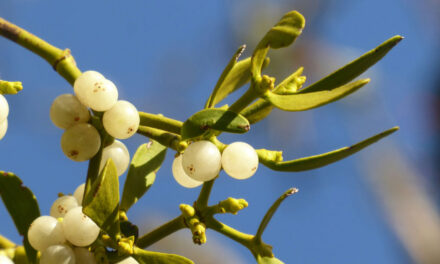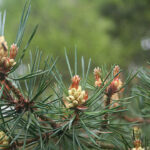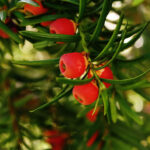
Yew and the Winter Solstice: A Tree of Eternity

The winter solstice marks the longest night of the year. It’s a moment of pause, a time to reflect on the cycle of life and the promise of brighter days ahead. Throughout history, people have turned to nature for symbols of hope and resilience. One of the most enduring symbols is the Yew tree. This ancient evergreen stands for life, death, and rebirth, making it a perfect focus for today, the solstice.
The Yew’s Unique Botanical Characteristics
The Yew tree, Taxus baccata, is truly remarkable. It keeps its dark green needles year-round, a constant reminder of life’s endurance even through the harshest winters. Yews grow slowly, but their patience pays off—they can live for thousands of years. Some Yews in Europe are estimated to be over 2,000 years old. This incredible lifespan has made them symbols of eternity.
The Yew’s ability to regenerate is just as impressive. Even if its trunk hollows out or decays, new shoots can sprout from the remaining wood. Few trees can do this, and it’s one of the reasons Yews often represent rebirth and continuity.
The Yew’s appearance is also unique. Its flat, dark green needles are lighter underneath, giving the foliage a soft, layered look. The branches twist and spread low to the ground, creating the gnarled, mystical shapes we often associate with ancient Yews. Female Yew trees grow small red berries called arils, which look bright and inviting but hide a dark secret. While the fleshy arils are harmless to birds, every other part of the tree—including the seeds, bark, and needles—is toxic to most animals due to a compound called taxine.
Yews thrive in well-drained soils and grow in rocky, challenging conditions. You’ll often find them in churchyards, ancient woodlands, or even clinging to cliffs.
Historical and Cultural Significance
People have admired and feared Yew trees for centuries. Ancient Celts and Norse cultures saw them as sacred, connecting the world of the living to the afterlife. Yews often grew in burial grounds and places of worship. Their presence symbolised death and rebirth, offering comfort in the idea of life’s endless cycle.
In Christian traditions, Yews became common in churchyards. They came to represent eternal life, acting as guardians of the dead and a link between earthly life and the divine. The Yew’s longevity and ability to endure made it a powerful reminder of the promise of resurrection.
Yew’s Relevance to the Winter Solstice
On the darkest day of the year, the Yew stands as a beacon of hope. Its evergreen leaves remind us that life persists, even in the hardest times. Its ability to regenerate mirrors the promise of the solstice: the return of light and a new beginning.
For centuries, people have turned to the Yew for inspiration during the solstice. Its strength and endurance reflect the resilience we need to navigate our own dark moments. As the sun begins its slow return, the Yew reminds us that light and life will always find a way back.
The Yew tree stands out in the botanical world for its remarkable durability and unique characteristics. Its dark green, evergreen needles endure through the seasons, offering a constant presence in the landscape. Yews can live for thousands of years, with the ability to regenerate even from hollowed trunks, symbolising life’s continuity. Their ability to thrive in poor soils and rocky terrains demonstrates their resilience, while their slow growth and long lifespan highlight their connection to eternity. The Yew is truly a tree that carries both strength and mystery, making it an enduring symbol of nature’s ability to adapt and endure through time.















